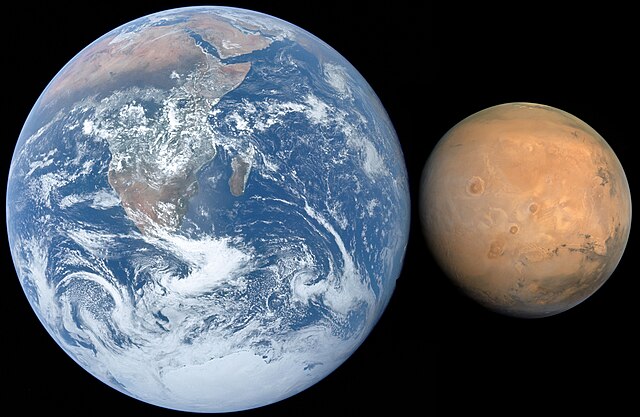Sinus Meridiani is an albedo feature on Mars stretching east-west just south of the planet's equator. It was named by the French astronomer Camille Flammarion in the late 1870s.
Sinus Meridiani, seen as the dark region just below the centre of the image at the end of the protrusion from the left (Sinus Sabaeus)
This image shows an arcuate ridge in Terra Meridiani.
Enigmatic ridges in Terra Meridiani from HiRISE, 2012. Terra Meridiani is one of the more complex regions on Mars.
The rock "Berry Bowl."
Mars is the fourth planet from the Sun. The surface of Mars is orange-red because it is covered in iron(III) oxide dust, giving it the nickname "the Red Planet". Mars is among the brightest objects in Earth's sky, and its high-contrast albedo features have made it a common subject for telescope viewing. It is classified as a terrestrial planet and is the second smallest of the Solar System's planets with a diameter of 6,779 km (4,212 mi). In terms of orbital motion, a Martian solar day (sol) is equal to 24.5 hours, and a Martian solar year is equal to 1.88 Earth years. Mars has two natural satellites that are small and irregular in shape: Phobos and Deimos.
Comparison: Earth and Mars
Curiosity's view of Martian soil and boulders after crossing the "Dingo Gap" sand dune
Valles Marineris, taken by the Viking 1 probe
Edge-on view of Mars atmosphere by Viking 1 probe








